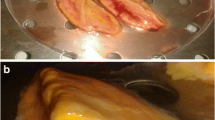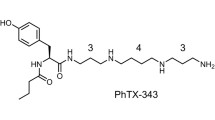Abstract
In pheochromocytoma PC12 cells, (+)-cis-decahydroquinoline 195A (5-methyl-2-propyl-cis-decahydroquinoline) and (+)-perhydro-cis-decahydroquinoline 219A (2,5-dipropyl-cis-decahydroquinoline) inhibit carbamylcholine-elicited sodium flux with IC50 values of 1.0 and 1.5 μM, respectively. Both of these decahydroquinolines appear to enhance desensitization, although apparent lack of complete removal of (+)-perhydro-cis-219A by washing complicates interpretation of the effects of that agent. A series of cis- and trans-decahydroquinolines with substituents in the 2- and 5-position also exhibit structure-dependent inhibition of carbamylcholine-elicited sodium flux in PC12 cells and all of the decahydroquinolines inhibit binding of the noncompetitive blocking agent [3H]perhydrohistrionicotoxin to muscle-type nicotinic acetylcholine receptor-channels in membranes fromTorpedo electroplax. The Ki values in electroplax membranes range from 1.4 to 7.9 μM, making these alkaloids comparable in potencies to the histrionicotoxins. Potencies are increased 2- to 3-fold in the presence of an agonist, carbamylcholine. The profile of activities are similar in PC12 cells and electroplax membranes. The cis- and trans-decahydroquinolines represent another class of noncompetitive blockers for acetylcholine receptor-channels with similar activity for both muscle-type and ganglionic type nicotinic receptors.
Similar content being viewed by others
References
Albuquerque, E. X., Barnard, E. A., Chiu, T. H., Lapa, A. J., Dolly, J. O., Jansson, S.-E., Daly, J., and Witkop, B. 1973. Acetylcholine receptor and ion conductance modulator sites at the murine neuromuscular junction: Evidence from specific toxin reactions. Proc. Natl. Acad. Sci. USA 70:949–953.
Albuquerque, E. X., Daly, J. W., and Warnick, J. E. 1988. Macromolecular sites for specific neurotoxins and drugs on chemosensitive synapses and electrical excitation in biological membrane.in Narahashi, T. (ed.), Ion Channels, Plenum Publishing Corp., Vol. 1, pp. 95–162.
Aronstam, R. S., Eldefrawi, A. T. Pessah, I. N., Daly, J. W., Albuquerque, E. X., and Eldefrawi, M. E. 1981. Regulation of [3H]perhydrohistrionicotoxin binding toTorpedo ocellata electroplax by effectors of the acetylcholine receptor. J. Biol. Chem. 256:2843–2850.
Aronstam, R. S., King, C. T., Albuquerque, E. X., Daly, J. W., and Feigl, D. M. 1985. Binding of [3H]perhydrohistrionicotoxin and [3h]phencyclidine to the nicotinic receptor ion channel complex ofTorpedo electroplax: Inhibition of histrionicotoxin and derivatives. Biochem. Pharmacol. 34:3037–3047.
Boulter, J., O'Shea-Greenfield, A., Duvoisin, R. M., Connolly, J. G., Wada, E., Jensen, A., Gardner, P. D., Ballivet, M., Deneris, E. S., McKinnon, D., Heinemann, S., and Patrick, J. 1990. α3, α5, and β4: Three members of the rat neuronal nicotinic acetylcholine receptor-related gene family form a gene cluster. J. Biol. Chem. 265:4472–4482.
Burgermeister, W., Catterall, W. A., and Witkop, B. 1977. Histrionicotoxin enhances agonist-induced desensitization of acetylcholine receptor, Proc. Natl. Acad Sci. USA 74:5754–5758.
Changeux, J.-P. 1990. The nicotinic acetylcholine receptor: an allosteric protein prototype of ligand-gated ion channels. Trends Pharmacol. Sci. 11:485–492.
Daly, J. W., Myers, C. W., and Whittaker, N. 1987. Further classification of skin alkaloids from neotropical poison frogs (Dendrobatidae), with a general survey of toxic/noxious substances in the amphibia. Toxicon 25:1023–1095.
Daly, J. W., Nishizawa, Y., Edwards, M. W., Waters, J. A., and Aronstam, R. S. 1991. Nicotinic receptor-elicited sodium flux in rat pheochromocytoma PC12 cells: Effects of agonists, antagonists, and noncompetitive blockers. Neurochemical Res., 16:489–500.
Daly, J. W., and Spande, T. F. 1986. Amphibian alkaloids: Chemistry pharmacology and biology. In “Alkaloids: Chemical and Biological Perspectives”, S. W. Pelletier (Ed.), Vol. 4, pp. 1–274.
Daly, J. W., Tokuyama, T., Habermehl, G., Karle, I. L., and Witkop, B. 1969. Forschgifte. Isolierung und Strucktur von Pumiliotoxin C. Justus Liebigs Annalen der Chemie 729:198–204.
Heidmann, T., Oswald, R. E., and Changeux J.-P. 1983. Multiple sites of action for noncompetitive blockers on acetylcholine receptor rich membrane fragments fromTorpedo marmorata. Biochemistry 22:3112–3127.
Eldefrawi, A. T., Eldefrawi, M. E., Albuquerque, E. X., Oliveira, A. C., Mansour, N., Adler, M., Daly, J. W., Brown, G. B., Burgermeister, W., and Witkop, B. 1977. Perhydrohistrionicotoxin: A potential ligand for the ion conductance modulator of the acetylcholine receptor. Proc. Natl. Acad. Sci. USA 74:2172–2176.
Glavinovic, M., Henry, J. L., Kato, G., Krnjevic, K., and Puil, E. 1974. Histrionicotoxin: Effects on some central and peripheral excitable cells. Can. J. Physiol. Pharmacol. 52:1220–1225.
Kilpatrick, D. L., Slepetis, R., and Kirshner, N. 1981. Inhibition of catecholamine secretion from adrenal medulla cells by neurotoxins and cholinergic antagonists. J. Neurochem. 37:125–131.
Lapa, A. J., Albuquerque, E. X., Sarvey, J. W., Daly, J., and Witkop, B. 1975. Effects of histrionicotoxin on the chemosensitive and electrical properties of skeletal muscle. Exp. Neurol. 47:558–580.
Lowry, O. H., Rosenbrough, N. J., Farr, A. L., and Randall, R. J. 1951. Protein measurement with the Folin phenol reagent. J. Biol. Chem. 193:265–275.
McCloskey, P. J., and Schultz, A. G. 1988. Enantioselective total synthesis of (+)-perhydro-219A from an anthranilic acid derivative. J. Org. Chem. 53:1380–1383.
Nef, P., Oneyser, C., Alliod, C., Couturier, S., and Ballivet, M. 1988. Genes expressed in the brain define three distinct neuronal nicotinic acetylcholine receptors. EMBO J. 7:595–601.
Ogura, T., and Warashina, A. 1987. Effects of histrionicotoxin derivatives on ion channels and acetylcholine receptor-channel complexes in bull frog sympathetic ganglia. Comp. Biochem. Biophysiol. 886:249–254.
Overman, L. E., and Jessup, P. J. 1978. Synthetic-application of N-acylamino-1,3-dienes: An efficient stereospecific total synthesis of dl-pumiliotoxin C, and a general entry to cis-decahydroquinoline alkaloids. J. Am. Chem. Soc. 100:5179–5185.
Rapier, C., Wonnacutt, S., Lunt, G. G., and Albuquerque, E. X. 1987. the neurotoxin histrionicotoxin interacts with the putative ion channel of the nicotinic acetylcholine receptors in the central nervous system. FEBS Lett. 212:292–296.
Revah, F., Galzi, J.-L., Giraudat, J., Hanmont, P.-Y., Lederer, F., and Changeux, J.-P. 1990. The noncompetitive blocker [3H]chlorpromazine labels three amino acids of the acetylcholine receptor subunit: Implications for the α-helical organization of regions MII and for the structure of the ion channel. Proc. Natl. Acad. Sci. U.S.A. 87:4675–4679.
Schultz, A. G., Mccloskey, P. J., and Court, J. J. 1987. Enantioselective conversion of anthranilic acid derivatives to chiral cyclohexanes. Total synthesis of (+)-pumiliotoxin C. J. Am. Chem. Soc. 109:6493–6502.
Sine, S. M., and Taylor, P. 1982. Local anesthetics and histrionicotoxin are allosteric inhibitors of the acetylcholine receptor. J. Biol. Chem. 257:8106–8114.
Spivak, C. E., Maleque, M. A., Oliveira, A. C., Masukawa, L., Tokuyama, T., Daly, J. W., and Albuquerque, E. X. 1981. Actions of the histrionicotoxins at the ion channel of the nicotinic acetylcholine receptor and at the voltage-sensitive ion channels of muscle membranes. Mol. Pharmacol. 21:351–361.
Tokuyama, T., Nishimori, N., Karle, I. L., Edwards, M. W., and Daly, J. W. 1986. Alkaloids from dendrobatid poison frogs: Trans-decahydroquinolines and indolizidines. Tetrahedron 42:3453–3460.
Tokuyama, T., Tsujita, T., Garraffo, H. M., and Spande, T. 1991. Alkaloids from dendrobatid poison frogs: Further decahydroquinolines and 8-methylindolizidines. Tetrahedron, in press.
Wada, A., Uezono, Y., Arita, M., Tsuji, K., Yanaqihara, N., Kobayashi, H., and Izumi, F. 1989. High-affinity and selectivity of neosurugatoxin for the inhibition of22Na influx via nicotinic receptor-ion channel in cultured bovine adrenal medullary cells; comparative study with histrionicotoxin. Neuroscience 33:333–339.
Warnick, J. E., Jessup, P. J., Overman, L. E., Eldefrawi, M. E., Nimit, Y., Daly, J. W., and Albuquerque, E. X. 1982. Pumiliotoxin-C and synthetic analogs. A new class of nicotinic antagonists. Mol. Pharmacol. 22:565–573.
Author information
Authors and Affiliations
Rights and permissions
About this article
Cite this article
Daly, J.W., Nishizawa, Y., Padgett, W.L. et al. Decahydroquinoline alkaloids: Noncompetitive blockers for nicotinic acetylcholine receptor-channels in pheochromocytoma cells andTorpedo electroplax. Neurochem Res 16, 1207–1212 (1991). https://doi.org/10.1007/BF00966697
Accepted:
Issue Date:
DOI: https://doi.org/10.1007/BF00966697




